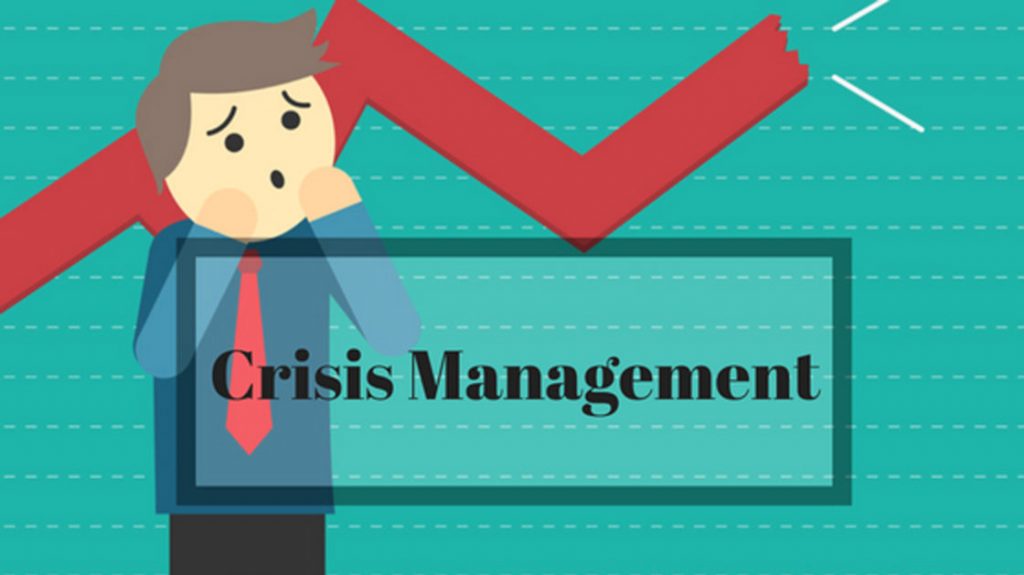
Crisis management is the process by which an organization deals with a disruptive and unexpected event that threatens to harm the organization, its stakeholders, or the general public. Many companies ignore or completely forget about crisis communications. Most companies don’t have a crisis communications department or a strategy in place to buffer them when the Crisis hits. As the world becomes more connected thanks to social media, information is now easily disseminated. When it would have taken days for a crisis to make it to the top of the news it now takes minutes to get all over the world.
The ideal crisis management manager’s task is to stop the crisis before it even begins. But as it happens with Crisis, it comes out of the blue with no warning. Give an example like the Bill Cosby date rape revelation. It started when Hannibal Buress talked about it as part of a comedic skit. In 24 hours it was all over the nightly news, social media, and on every publication in the world.
So how do you handle a crisis when it happens.
Assess the risk.
In this part, you assess the source of the Crisis and how it’s being received by the public. The three dimensions include.
- Whether the Crisis has happened before
- Whether the crisis was controllable by an individual or the organization
- Whether the crisis is external or internal to the organization.
Finding the source of the crisis enables us to come up with better solutions in formulating the message and choosing the medium of communication.
Define roles and responsibilities
In a crisis, all information must be centralized. Therefore the organization or individual must have a team responsible for handling the crisis. As they often said too many cooks spoil the broth. When you have a decentralized team then you have a lot of conflicting statements from all sides which are confusing to your shareholders and customers. It creates an atmosphere of distrust.
To define the roles you must have a group handling social media, you have a group handling the shareholders internally, you have a group handling media relations. Above all, you must have a team leader. The leader is a highly conscientious individual, they must also be capable of calm even in the face of a storm. They must be focused, they must be good at articulating ideas both to the team, media agencies and shareholders.
Draw up a communications plan
A good crisis management team then draws up the plan. The plan is dependent on the three dimensions mentioned above and the medium of distribution of the Crisis. An example of the international scene was the Dominos incident where employees were seen defiling food by spitting into the food etc. The video was posted on youtube and garnered over a million views. The company chose Social media specifically Youtube where they posted a video apology from the CEO. This is a good example of a crisis team that identifies the market and the crisis. A communications plan also details any legal ramifications the organization is likely to encounter.
Different groups of people with interests in the organization must be informed and kept up to date on how the crisis happened, how it’s been handled. This includes shareholders, customers, and employees. A pitch has to be drafted to these interested parties. The goal is to communicate one universal message using different mediums and a different language for each group but the message remains the same.
Honesty Honesty Honesty.
This is the crux of crisis management. Given the example of the Raila Odinga interview where he unequivocally told the interviewer that he did not incite the crowd to violence in the 2007 Kenyan elections while in the clip the interviewer showed a video of Raila Odinga at a rally doing just that. He may have forgotten that he made such a remark but your stakeholders, customers won’t care. Their trust in you is eroded and you come off looking rather foolish.
However, the question of honesty is always, how much will it cost me? And who I’m I being honest to? This is in situations where there are legal ramifications. In such cases, the question is always how do we remain honest while also ensuring that we don’t open ourselves up to legal proceedings. In some cases, an apology is taken as an admission of guilt. It is also prudent to ensure that you do not trump over fundamental rights such as free speech while disseminating your information. This will be covered under the crisis and the Law.
Collaborate and coordinate with credible sources.
It is always prudent to communicate with all credible sources. Credible sources could include workers unions, in case of a health crisis coordinate with bodies such as who, local NGO’s, doctors associations. This shows that you are aware of and committed to handling the crisis at hand. Involving the organization as well as the public builds trust and understanding where there might be none. It also shows a true commitment to return the organization or situation to normal.
Promote a crisis ready culture
After the crisis disseminates which might take hours if not days it’s time to ensure this type of crisis doesn’t happen again. Personally, my pet peeve is inefficient. I believe that every crisis is an opportunity to be more efficient. When a crisis hits the major challenge becomes time. The longer you take to respond to a crisis the further your credibility disintegrates for a larger company your share price drops and investors turn away. It’s an uphill task of taking your time to think through solutions while not taking too much time that you lose more than you bargained for.
With every crisis, you can cut out time-wasters. These are strategies that you have seen in the past cost you a lot of time. The reason it’s so high stress is that you are constantly learning.
So to ensure better performance at your next crisis take note of the strategies and ideas you used. Keep the ones that work, discard those that didn’t.
Perform an audit of the organization and implement preventative strategies that ensure a Crisis of that nature doesn’t happen again
Publish plans and train.
A great crisis management team sticks around long after the crisis is over. As we mentioned at the beginning of this article an ideal crisis manager is one that prevents the crisis from happening in the first place. After the dark clouds are long gone the crisis management team has formulated strategies that ensure that it doesn’t happen again. The team then trains the organization on the best preventative strategies. The training needs to be more practical than theoretical, using risk areas you assessed in point H as case studies. This ensures that the entire organization is ready, aware and informed.







